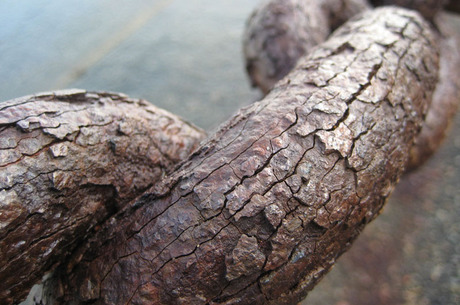Boride sandwiches

Oxidation can be the death knell for structural integrity, even in materials as hard and heat resistant as borides, but a European team of researchers has created a rust-resistant, aluminium-layered boride with a melting point north of 1400°C.
Borides are so hard and heat resistant that they are used in the harshest industrial environments, such as cutting metals and lining combustion engines, but they still suffer from high-temperature chemical degradation. Creating an oxidation-resistant boride has been the goal of Michel Barsoum, PhD, distinguished professor in the College of Engineering at Drexel University.
“This discovery is quite significant because it is the first example in the history of mankind of a transition metal boride that is quite oxidation resistant,” Dr Barsoum said.
Teaming up with researchers from Imperial College London and Sweden’s Linköping University, Dr Barsoum’s team combined a molybdenum-boron lattice with a double layer of aluminium to create molybdenum aluminium boride (MoAlB). This new material can resist oxidation at extremely high temperatures due to its nanolaminated structure, alternating layers of aluminium and molybdenum boride.
Dr Barsoum heads Drexel’s MAX/MXene Research Group in the Department of Materials Science and Engineering, which has been at the forefront of research into these unique materials since it created MAX phases two decades ago. He explained that the resistance to oxidation at high temperature is due to the behaviour of the aluminium atoms sandwiched between layers of molybdenum and boron.
“When heated to high temperatures in air, the aluminium atoms selectively diffuse to the surface and react with oxygen, forming a surface aluminium oxide, or alumina, protective layer that slows down further oxidation considerably. So the material forms its own protective coating.”
Preliminary testing of MoAlB indicates a melting point in excess of 1400°C, leading Dr Barsoum to speculate that they are on track to create oxidation-resistant borides with ultrahigh melting points.
“Now we know we’re looking in the right place to make materials with this impressive set of properties,” said team member and doctoral student Sankalp Kota. “Most people were trying to make binary borides oxidation resistant by adding other phases and coatings.”
Kota believes the key to “making materials with interesting properties” is combining three or more elements to produce “a material with a new combination of properties”.
This research was published in Scientific Reports.
Smartphone compass used to measure glucose
Researchers have used an ordinary smartphone's built-in magnetometer, or compass, to measure...
Coin-sized device can isolate plasma, replacing centrifuges
Named ExoArc, the coin-sized chip can achieve high blood plasma purity by removing more than...
Novel conductive material gets tougher when hit or stretched
Inspiration for the soft, flexible material came from a mixture commonly used in cooking —...







